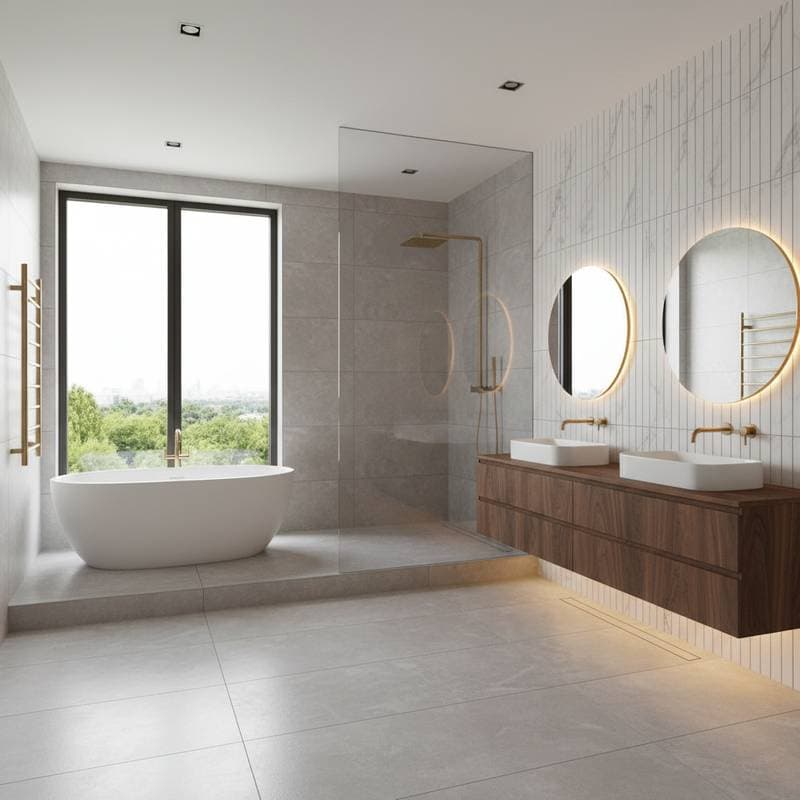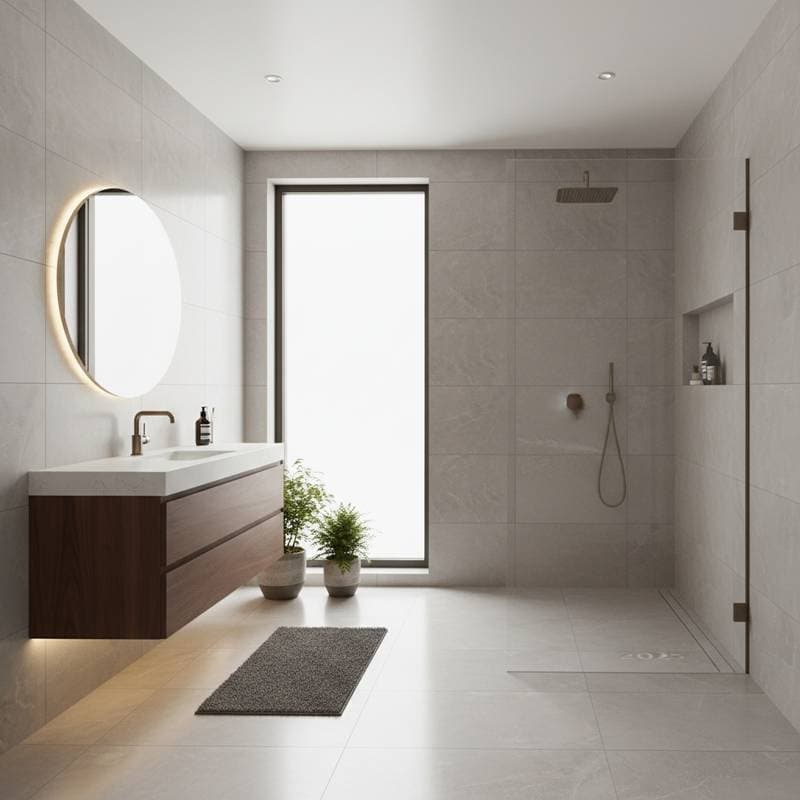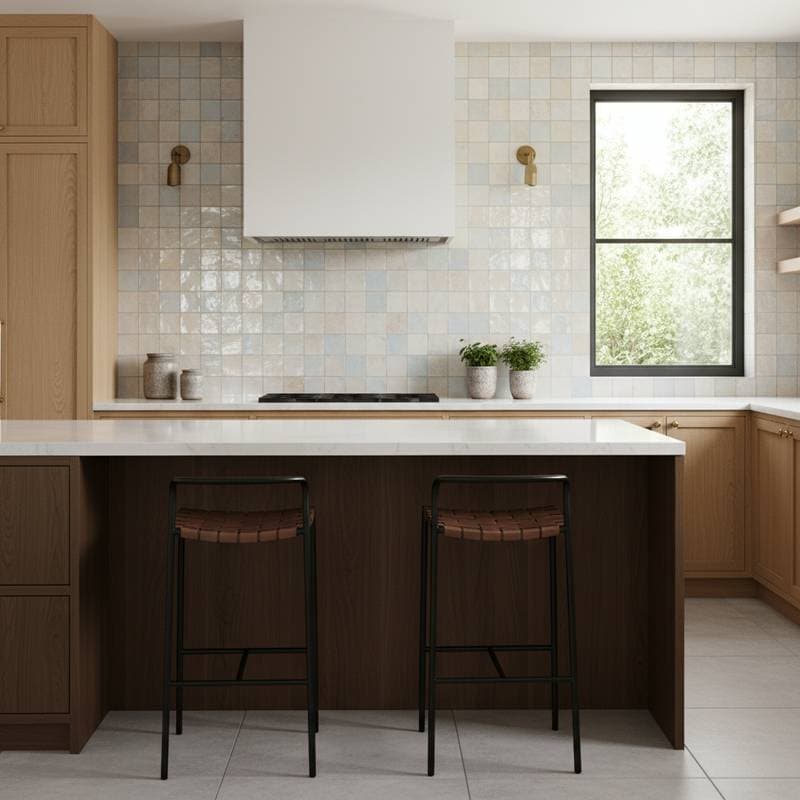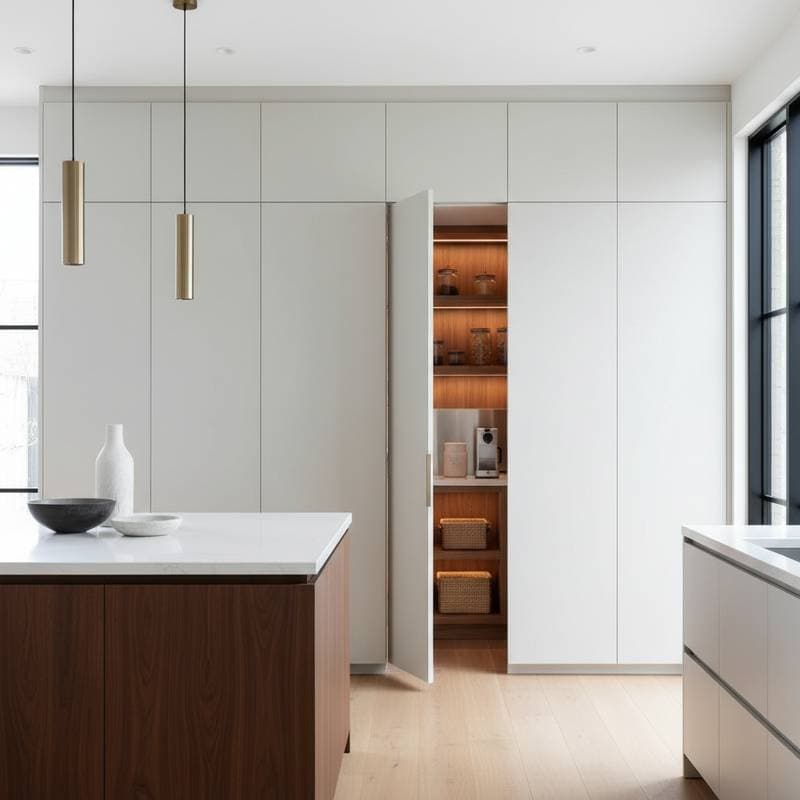The Rise of Dark Kitchens in Modern Homes
Home buyers in 2025 seek spaces that reflect personal style and practicality. Dark kitchens, characterized by rich, deep hues and dramatic contrasts, stand out as a key trend influencing purchasing decisions. This shift moves away from bright, sterile designs toward intimate, luxurious environments that enhance daily living.
Real estate experts note a 25 percent increase in properties featuring dark kitchens closing faster than traditional ones. Buyers appreciate how these designs create a sense of warmth and exclusivity. As urban living evolves, such kitchens align with the desire for cozy, personalized retreats.
Defining Dark Kitchens: Core Elements and Appeal
A dark kitchen incorporates cabinetry, walls, and countertops in shades like charcoal gray, navy blue, or matte black. These elements pair with metallic accents and natural wood textures for balance. The result is a space that feels grounded and elegant, far from the all-white kitchens of past decades.
Lighting plays a crucial role in this design. Recessed LEDs and under-cabinet strips highlight textures without overwhelming the palette. Open shelving in brass or gold adds subtle gleam, drawing the eye to curated dishware or plants.
This aesthetic appeals to millennials and Gen Z buyers, who prioritize Instagram-worthy homes. Surveys indicate 60 percent of young professionals view dark kitchens as a status symbol. The trend extends beyond aesthetics, offering functional benefits like hiding fingerprints and spills on darker surfaces.
Why Dark Kitchens Drive 2025 Buyer Demand
Market data reveals dark kitchens boost property values by up to 15 percent in competitive areas. Buyers associate these designs with high-end, custom builds, even in standard homes. The moody vibe fosters a restaurant-like atmosphere, ideal for entertaining or remote work breaks.
Sustainability factors into the appeal as well. Dark finishes often use eco-friendly paints with low volatile organic compounds. Paired with energy-efficient appliances, these kitchens support green living goals that resonate with environmentally conscious buyers.
Regional influences amplify the surge. In coastal cities like Los Angeles, dark kitchens contrast sunny exteriors, creating indoor oases. Inland markets see them as a way to combat harsh light, making homes feel more inviting year-round.
Key Pros and Potential Drawbacks
Dark kitchens offer several advantages that solidify their popularity. They camouflage everyday wear, reducing maintenance efforts. The dramatic look elevates smaller spaces, making compact kitchens appear deeper and more sophisticated.
Resale potential remains strong, with renovated dark kitchens recouping 70 to 90 percent of costs. Homeowners enjoy the versatility; these designs adapt to various styles, from industrial to minimalist.
However, challenges exist. Poor lighting can make spaces feel cramped if not addressed. Higher initial costs for quality materials add to the investment. Careful planning mitigates these issues, ensuring the design suits the home's overall flow.
Understanding Remodel Costs: From Budget to Luxury
Basic dark kitchen updates start at $14,000 for painting cabinets and installing new hardware. This approach refreshes existing layouts without major changes. Mid-range projects, around $30,000 to $50,000, include countertop replacements in quartz or soapstone that complement dark tones.
Full remodels exceed $80,000, incorporating custom cabinetry and integrated appliances. Factors like square footage and material quality drive these figures. Labor in urban areas adds 20 to 30 percent more than rural estimates.
Homeowners should budget for lighting upgrades, which add $2,000 to $5,000. Professional consultations help avoid overruns. Financing options, such as home equity loans, make these transformations accessible.
Practical DIY Tips for Achieving the Look
Start with color selection. Test samples in natural and artificial light to ensure the shade enhances the room's mood. Navy or forest green works well for beginners, offering depth without full commitment.
- Prep surfaces thoroughly before painting. Sand cabinets for a smooth finish and apply primer suited for high-moisture areas.
- Incorporate metallic pulls and knobs for contrast. Opt for brushed nickel or oil-rubbed bronze to add warmth.
- Layer lighting sources. Combine overhead fixtures with task lights over sinks and stoves.
- Add texture through backsplashes. Subway tiles in dark grout or matte ceramic panels create visual interest.
- Accessorize thoughtfully. Use wooden cutting boards and ceramic vases to soften the palette.
These steps allow gradual implementation, building confidence in the design.
2025 Trends Shaping Dark Kitchen Evolution
Experts predict matte finishes will dominate, reducing glare in smart homes with voice-activated lights. Integration of technology, like hidden charging stations, fits seamlessly into dark cabinetry.
Biophilic elements gain traction, with dark greens mimicking nature. Vertical gardens or herb walls in shadowy corners bring life to the space. Mixed metals, blending gold and silver, offer a fresh take on hardware.
Affordable modular units make dark kitchens viable for rentals. Pre-fabricated islands in deep hues allow quick updates. As virtual tours become standard, these designs photograph strikingly, aiding sales.
Invest in Timeless Drama for Your Home
Embracing a dark kitchen positions your home at the forefront of 2025 trends. This choice not only captivates buyers but also enriches daily experiences with style and efficiency. Consult local designers to tailor the vision to your space, unlocking long-term value and satisfaction.












